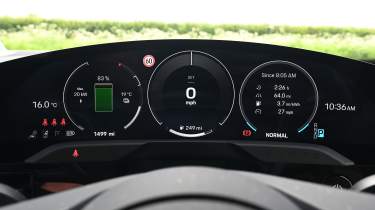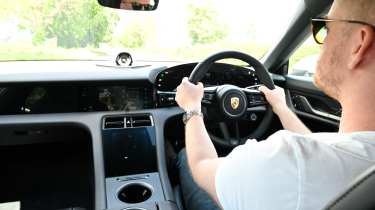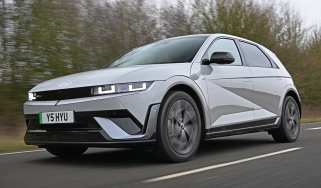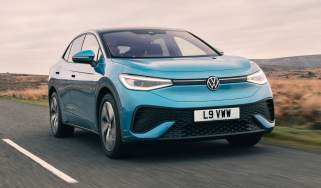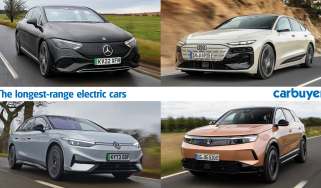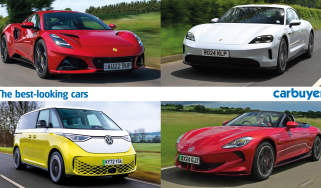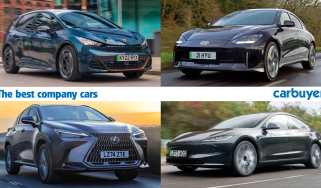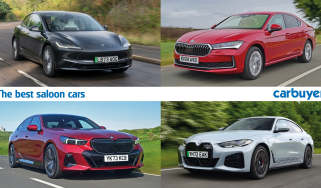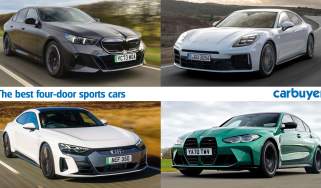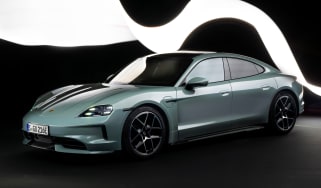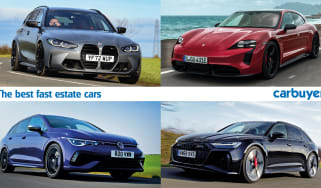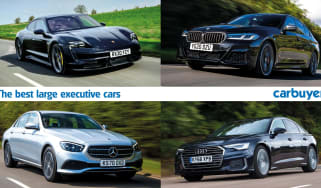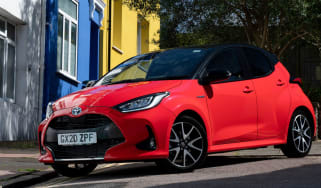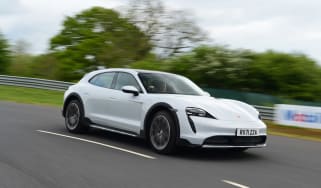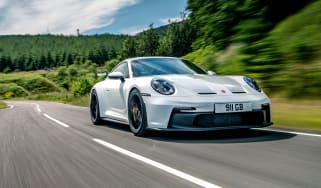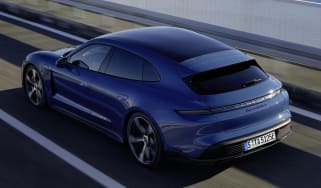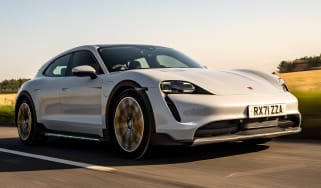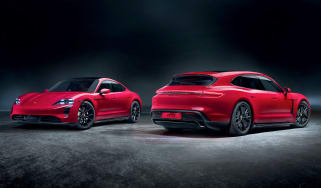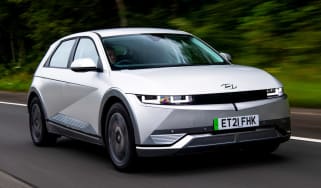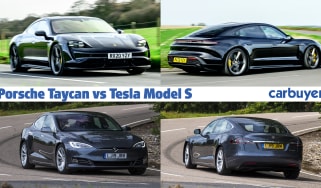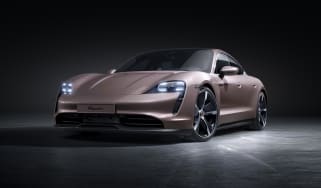Porsche Taycan review – one of the best EV driver’s cars
"The Porsche Taycan is a fully electric four-seater saloon that's great to drive, has a smart interior and supports ultra-fast charging"
Pros
- Performance
- Low running costs
- Interior quality
Cons
- Expensive
- Limited luggage room
- Lack of compatible chargers
Verdict – is the Porsche Taycan a good car?
The all-electric Porsche Taycan is a pivotal car for the revered German marque; the fact it's also one of the best four-door sports coupes for many years shows just how impressive it is. The Taycan continues to prove that Porsche can make EVs that are great to drive, with a usable range, quick charging, comfortable, stylish and luxurious interiors. On the downside, there’s less luggage space than we’d have liked, and it also won’t be affordable for many buyers.
Porsche Taycan models, specs and alternatives
The Porsche Taycan represented the beginning of a new, electric era for Porsche, and it’s a car that retains the brand’s sporty DNA despite the absence of a combustion engine. Not only that, it was the first genuine alternative to a Tesla Model S, and only years later has Porsche’s second electric model arrived – the Porsche Macan Electric. The Taycan has impressed us so much that it won our Best Large Company Car Award back in 2022 and is one of our favourite electric cars to drive.
Porsche updated the Taycan for the 2024 model year, and while it doesn’t look all that different on the outside – aside from a tweaked front bumper – it feels like a whole new generation for the model underneath. It’s now faster than ever and can travel even further when its battery is charged up. The updates are designed to keep the Taycan competitive and stand out in what is a rapidly developing market, with even mainstream EVs capable of astonishing power figures, and new arrivals like the Lotus Emeya and Polestar 5 aiming to dethrone the Porsche.
The range starts with the standard single-motor rear-wheel drive Taycan which now boasts 429bhp and accelerates from 0-62mph in 4.8 seconds – even the base model is no slouch. Above this is the Taycan 4S with dual-motor four-wheel drive and even more power, then the Taycan Turbo, Turbo S and finally the Turbo GT and Turbo GT with the Weissach Package, which has an astounding 1,019bhp and can do 0-62mph in a barely-believable 2.2 seconds.
More reviews
In-depth reviews
If that’s not enough choice, you can also pick different body styles. Besides the saloon you see here, Porsche offers an estate version known as the Sport Turismo – this can be had in standard, 4S, Turbo and Turbo S specifications. There’s also a slightly higher-riding Cross Turismo model offered in those aforementioned trims, as well as a 4 model.
The Taycan shares many of its underpinnings with the Audi e-tron GT, but combines some of the styling cues of the Porsche 911 and Panamera and has its own unique personality. At this front, it gets rectangular LED headlights with four daytime running lights which frame them top and bottom. Since the revisions for 2024, the entry-level models’ front bumpers are much simpler in design, while Turbo models and upwards get more aggressive angular air vents for a little more presence. At the rear, there's a full-width LED light bar and a spoiler that pops up when more downforce is necessary.
In terms of electric range, the Taycan is most efficient in standard single-motor guise when paired with the Performance Battery Plus option, where its 105kWh battery can get up to 422 miles from a charge – that’s 35% more than before the facelift. While previously an entry-level 89kWh battery was offered with a 367-mile range, in March 2025 Porsche announced that the 105kWh battery would be offered as standard.
The Taycan was always great to drive, but the facelift has made it even better. It feels precise and sporty considering its size and weight. Impressive Active Ride suspension makes it easy to control and very composed. Admittedly the Taycan isn’t the last word in comfort, but it’s forgivable given how well it performs dynamically.
There's room for four adults inside, and while space can't quite match the Panamera, the four-door's rear seats are much more usable than those of the 911. It's not as big as the Model S, though, as attested by the 407-litre boot, which is usable but much smaller than that of the Tesla. The Sport and Cross Turismo versions offer slightly more space.
Which Is Best?
Cheapest
- Name320kW 105kWh 4dr RWD Auto [Revised]
- Gearbox typeAuto
- RRP£88,845
Most Economical
- Name320kW 105kWh 4dr RWD Auto [5 Seat] [Revised]
- Gearbox typeAuto
- RRP£89,215
Fastest
- Name761kW Turbo GT 105kWh 4dr Auto [Weissach Pack]
- Gearbox typeAuto
- RRP£189,845
